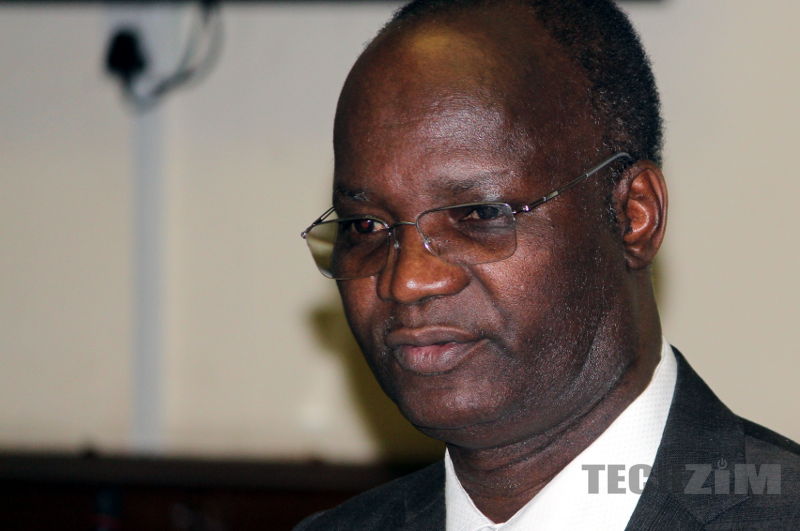In 2016, the Ministy of Higher and Tertiary Education (under Jonathan Moyo at the time) introduced a national initiative that would (at least according to them) drive economic growth. This initiative was meant to boost the study of STEM (Science Technology Engineering and Mathematics) at A Level and would see the government sponsor children who would register for science subjects at A’Level at public schools.
The death of ‘STEM’ as we knew it?
As recently as January of this year, the government announced that they would be cancelling STEM A’Level scholarships and the A’Level students currently enrolled under the program would be the last to receive support from the government.
Instead of paying for the fees of students the government will now pay for training of teachers in the STEM field and they will also be focusing more on tertiary education. The government has also decided to allocate $500 million to support rural schools to teach STEM subjects by constructing and equipping labs etc.
The issue of pass rates…
The recent revelations concerning the pass rate of students who were enrolled under STEM have led state media to conclude the program has been a dismal failure. Some of the statistics given by The Sunday Mail are:
- ‘35% of the sponsored students failed to get a point.’ This one doesn’t seem to make sense because they earlier state that ‘385 scored zero.’ 385 is actually just 7% of 5 308 students who sat for the exams.
- 19% passed two subjects.
- 9% passed one subject.
- 385 had 0 points
- 2000 had less than 3 points (38%)
Is the program really a failure or is media creating a story
Yes, the situation is not exactly a bowl of sunshine but the media is also creating a sensation out of it. The presentation of statistics is done in a way that milks the story and puts people in overdrive.
With this in mind, I think there might be some character assassination going on in regards to Jonathan Moyo. I mean the guy is certainly not a crowd pleaser and it seems to get worse with every tweet, but we definitely need to separate issues here.
Most headlines regarding STEM’s ‘failure’ seem to imply that the program was solely Jonathan Moyo’s and he is to blame for all that has transpired. Truly this kind of initiative’s success or failure cannot be attributed to one man.
Some of the problems that may have led to this…
No clear vision
As noted above, the government introduced the STEM programme because they wanted to drive economic growth. The problem with an aim such as this is that it is too broad and unrefined. There were no specific timelines or a solid guiding principal, like the one in Rwanda: the nation has a vision understood from the suit-wearers to the street-sellers.
The awarding of the scholarships
Well, the stats are certainly alarming. It is generally not expected that scholarship students fail this abysmally but this could be the result of the nature of the program. There was no selection criteria to award the scholarships. Any student who wanted to study sciences at a public school would be sponsored by the government indiscriminately.
The fact that students would have all their fees paid for them might have led to parents forcing their children to register for science subjects in order to access education in circumstances where the parents would have struggled to fork out fees required. I don’t present this as fact but rather as a theory that may explain why there seems to be such a high rate of failure in terms of pass rate.
This indiscriminate awarding of scholarships is not necessarily a bad idea. It is a problem however, when the resources are too scarce.
Resources resources
Another problem Zimbabwe faces in relation to STEM education is that of resources. The economic situation has also led to teachers seeking better living conditions outside the country. The issue of brain drain has been a concern in almost every industry as field leaders would rather go outside and reap the harvests of their labour outside of Zimbabwe, which is fair upon them. We all strive to live comfortably after all.
Brain drain coupled by lack of resources produces results like this and the fact of the matter is in terms of labs and lab equipment our country’s schools are in a dire position. If students are going through a two-year course but they do not have access to the labs then the chances that they will actually pass the practical sections are nigh on impossible. How then can you blame the students for failing when they were not capacitated to pass in the first place?
Too early to abort
Also, the initiative was just in its second year so abandoning it this early may be a bit trigger happy and we may come to regret this in future. Why not revise it and learn from the failures that have presented themselves and continue tweaking it. Surely, the government did not expect the seeds they sowed in 2016 to bear fruits in 2018. Remember, Rome was not built in a day after all.
Going forward what is the solution?
STEM doesn’t exist in isolation
At the end of the day, however, the universities are already churning out graduates in these fields and they have failed to get jobs in Zimbabwe’s cut-throat employment market.
Is it not better to build more rounded and innovative students rather than saying the government will abruptly stop supporting. Why not value arts and sciences equally and understand that when both fields are used hand-in-hand they provide solutions that better fit in society. Steve Jobs has a famous quote on why he studied calligraphy( basically the study of handwriting). He had this to say:
I decided to take a calligraphy class to learn how to [learn calligraphy]. I learned about serif and sans-serif typefaces, about varying the space between different letter combinations, about what makes great typography great. It was beautiful. Historical. Artistically subtle in a way that science can’t capture. And I found it fascinating. None of this had any hope of any practical application in my life. But 10 years later, when we were designing the first Macintosh computer, it all came back to me. And we designed it all into the Mac. It was the first computer with beautiful typography. If I had never dropped in on that single course in college, the Mac would never have multiple typefaces or proportionally spaced fonts. And since Windows just copied the Mac, it’s likely that no personal computer would have them.
One of the greatest minds who brought us the Mac, iPhone and iPad in all their glory attributes his ascendency to a course he took studying handwriting and not his engineering acumen, which he had in spades as well. Take that for data! There is a synergy between science and art and if only we invest in science at the exclusion of art we miss the point.
Building labs is a good idea
Moving forward the government has pledged to put funds into building more labs and training more teachers. This may actually be more impactful than simply sponsoring more students who will not get adequate exposure to the technology they are supposed to have mastery over. Once the labs have been built the government can then try to sponsor students and set them up for actual success.
The right track?
The government is now considering sponsoring STEM students at tertiary level instead of high school.. As cited by the new Higher Education Minister, Amon Murwira, there was no guarantee that STEM students sponsored at A level would continue in the science field after A’Level and not move to other fields. With students in tertiary education that risk is reduced by a great margin and most people who are taking science-related subjects will pursue jobs in that field after they have completed their education.
Having a definitive set of goals for STEM that can be revisited after certain periods will help in gauging the success or failure of the initiative going forward. It will also better inform the government on how they can actually tweak the program going forward. I think calling the program a failure right now is not entirely true, and if it were up to me I would describe the STEM programme as ‘going through growing pains’ more than anything else.














Comments
7 responses
can we have the figures from the Ministry of education not Sunday Mail. we all know that there is bad blood between Zimpapers and Jonathan Moyo.
Yes, it was too soon to abandon STEM.
Yes, it was a total failure. It will never work. Incentivising people to study sciences means everyone will rush to study them, even the weak candidates
Thats so idiotic! Other countries in the world are driving STEM as a panacea for industrial growth, and you making such a useless comment.
I agree. Its worth noting that STEM is a global initiative. Perhaps we need to go back to the drawing board and see how the programme can be customised to our environ.
Great article!
It can’t be customised to our environment, because there is no shortage of STEM graduates in Zim. There has never been a shortage of any graduates of any discipline in Zim. Our problem is we are trying to apply global initiatives to our unique and completely different situation. That money should have been used to help the hundreds of unemployed graduates through paying global companies like IBM, MS, Amazon e.t.c to take our unskilled graduates for internships. That way, they will come back with skills. As of now, there is no shortage of graduates, only a shortage of skills
Stem / is a gvt initiative / its not a Jono thing. To scrap and or penalise beneficiaries, simply bcause of the Jono factor – shows how shallow our politics can be.
People learn everyday so do govts, we all go through a learning cycle. My personal view would have been making the necessary adjustments to improve the programme.
The two million dollar bugdet for me is not too much of a price to pay.